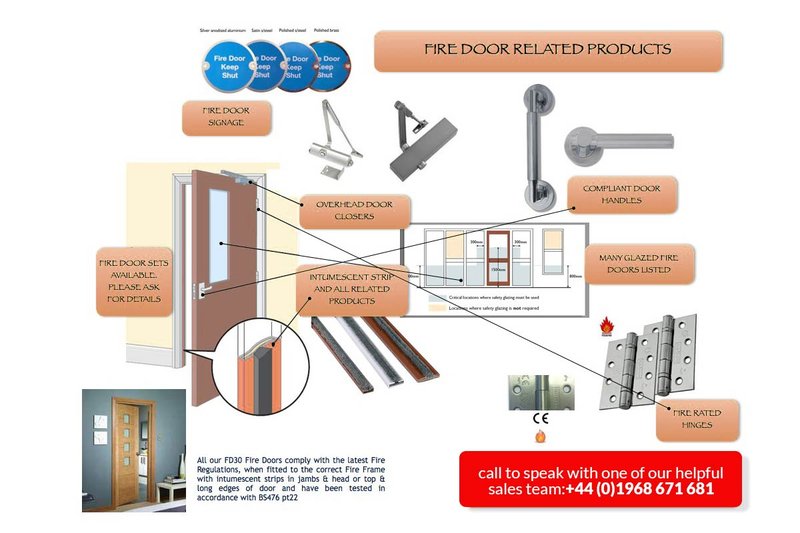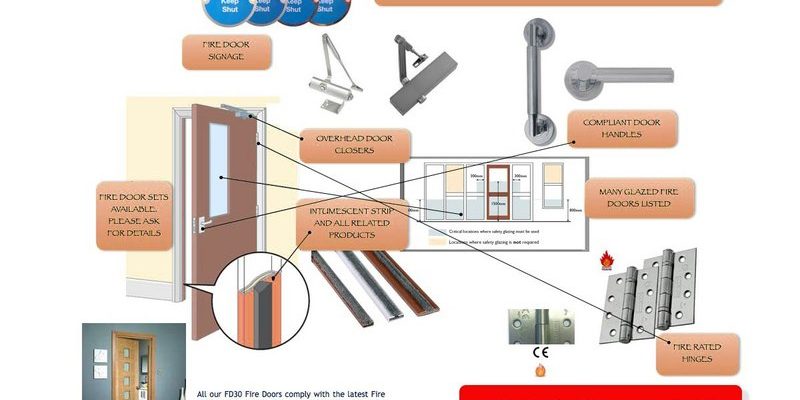
Replacing hardware on these doors isn’t just about aesthetics; it’s about compliance with specific regulations that exist to keep you safe. When you swap out components, it’s not as simple as picking any old doorknob you fancy. You’ll need to understand the types of hardware that can be used and the codes you must follow. Think of it like maintaining a classic car: you want to make sure you’re using the right parts to keep it running safely and effectively. Here’s what you should know.
Understanding Fire-Rated Interior Doors
Fire-rated interior doors are essential in protecting public and residential spaces from the spread of flames and smoke. These doors are tested and certified to withstand fire for a specific duration, typically ranging from 20 minutes up to 3 hours. The rating helps fire departments plan their response in an emergency. The primary purpose of these doors is to contain smoke and heat while providing a safe refuge for occupants.
Generally made from solid wood or steel, fire-rated doors can come with various hardware options. But it’s crucial to remember that not all hardware is suitable. Fire-rated doors are equipped to function under intense heat, so the hardware must also meet those standards. Using non-rated hardware on a fire-rated door can compromise the door’s effectiveness, leading to serious safety hazards.
Why Replacement Can Be Necessary
There are various reasons you might need to replace hardware on a fire-rated interior door. Perhaps the doorknob is sticking, or the hinges are rusted. Maybe you’ve had a recent renovation, and you want to update the look. Whatever the reason, it’s important to approach this task thoughtfully.
Replacing faulty hardware not only ensures that the door functions smoothly but also maintains its fire-resistance properties. Imagine trying to run away from a fire, only to find that your doorknob won’t turn or the hinges are squeaking and jamming; that’s a situation nobody wants. By taking the time to replace worn-out hardware, you’ll enhance both the safety and usability of your door.
Choosing the Right Hardware
Here’s the thing: not all hardware is created equal, especially when it comes to fire-rated doors. You might think that if it fits, it’s good enough, but that’s not the case here. Fire codes require that if you replace any hardware on a fire-rated door, the new components must also be fire-rated.
Look for components that are labeled as ANSI-certified or UL-listed. These certifications guarantee that the hardware has been tested under fire conditions and meets safety standards. Items to consider when replacing hardware include:
- Doorknobs and levers – Ensure they are specifically marked for fire-rated doors.
- Hinges – Heavy-duty, fire-rated hinges can be crucial for durability.
- Locks – Look for fire-rated locks that maintain integrity under heat.
- Strikes and frames – Make sure these are compatible with your fire-rated door.
Compliance and Building Codes
Before making any changes, it’s essential to familiarize yourself with local fire codes and regulations. Building codes can vary from one area to another, so what’s allowed in one city might not fly in another. In the United States, for example, the National Fire Protection Association (NFPA) provides guidelines on fire-rated doors.
If your door serves a critical function—like separating different occupancy types, for instance—you might face stricter regulations. Always consult with your local authority or a certified professional to ensure compliance with the relevant codes.
To make things easier, here are some general compliance tips to keep in mind:
- Check local building codes regarding fire-rated doors and hardware.
- Document all hardware changes for inspections.
- Use hardware that matches the fire-rating of your door.
Replacing the Hardware: Step-by-Step
Ready to tackle the replacement? Here’s a straightforward process that will get you through it smoothly.
1. Gather Tools and Materials: You will need a screwdriver, a drill, a tape measure, and of course, your new hardware.
2. Remove Existing Hardware: Start by removing the old doorknob, hinges, and any other hardware. Make sure to keep screws and parts in a container to avoid losing them.
3. Measure and Prepare: Take measurements to ensure your new hardware fits correctly. Adjust the door and frame as necessary to make way for the new pieces.
4. Install New Hardware: Follow the manufacturer’s instructions for installation. Make sure every component is secure and operates smoothly.
5. Test Everything: Once installed, test the door multiple times. Check for proper function, and ensure it swings freely without sticking.
Common Issues and Troubleshooting
Even with careful planning, you might encounter issues during or after installation. Maybe the door won’t close properly, or the hardware seems loose. Here are some common problems and easy solutions:
– Door Won’t Latch: Check if the strike plate is misaligned. You may need to adjust the plate or the hinges.
– Squeaky Hinges: Lightly apply lubricant designed for hinges. Avoid over-lubricating, as that can attract dirt.
– Doorknob Sticking: Inspect the knob mechanism for any debris. Sometimes, a good clean can solve the issue.
If problems persist, don’t hesitate to consult with a professional. Knowing when to ask for help can save you time and stress.
Maintenance Tips for Fire-Rated Interior Doors
After replacing hardware on your fire-rated door, maintaining it is essential. Here are some simple tips to follow:
– Regular Inspections: Check your door and its hardware every few months. Look for signs of wear or damage.
– Cleaning: Use a soft cloth and mild detergent to clean the door and hardware. Avoid harsh chemicals that could damage finishes.
– Lubrication: Periodically lubricate hinges and locks to keep them functioning smoothly.
Taking these steps will prolong the life of your door and its hardware, helping maintain safety and functionality.
In conclusion, replacing hardware on a fire-rated interior door is a task that requires careful consideration and adherence to regulations. By choosing the right components, following local codes, and maintaining the door well, you can ensure your home stays safe and secure. Remember, while the job might seem straightforward, prioritizing safety and compliance is key. Stay informed, stay safe, and you’ll always be ready to face whatever comes your way.
